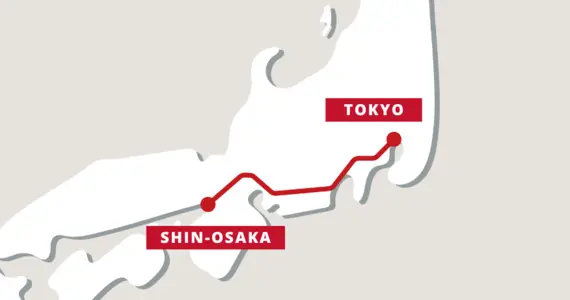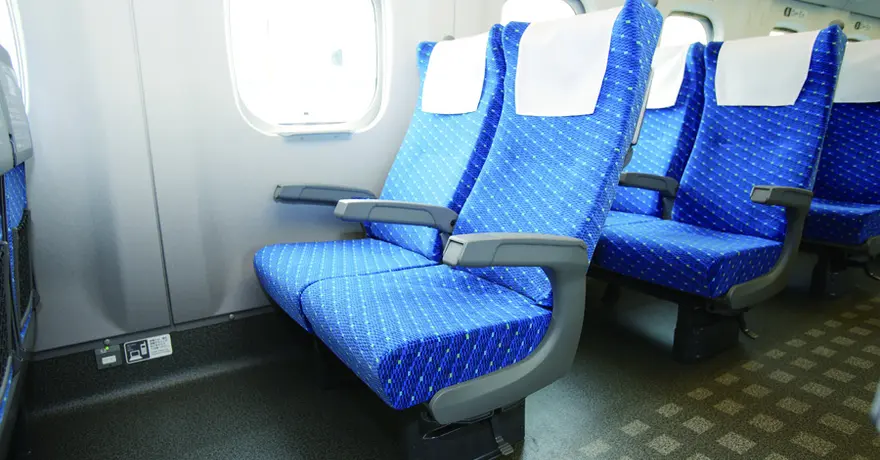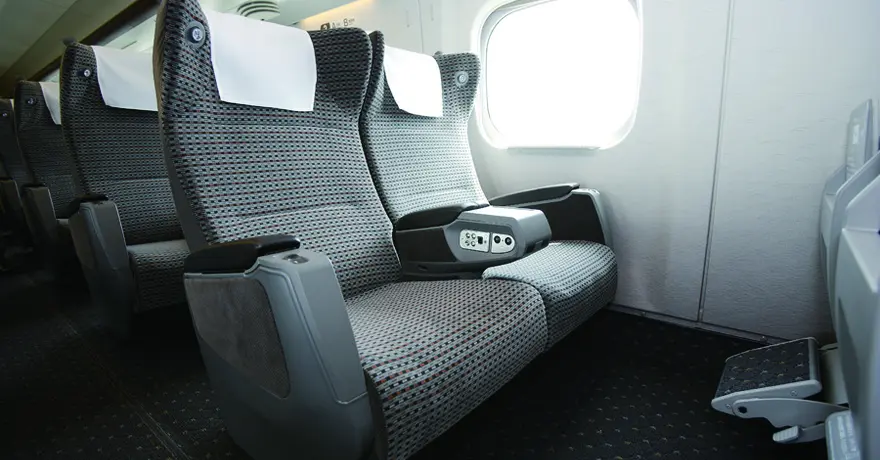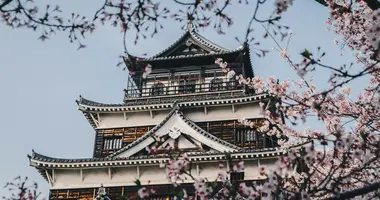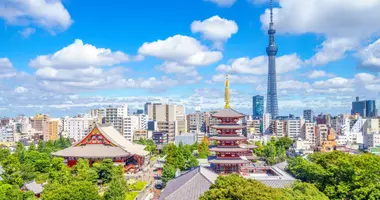Train Tickets from Tokyo to Osaka
Official train tickets seller
Choose your preferred seat
7/7 Assistance

Travel conditions
Ticket type
Passenger information
Seating options
Luggage conditions
Buy your train tickets in Japan in 3 easy steps
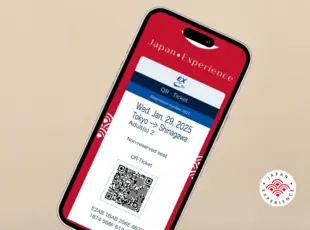
Choose and buy your train tickets for your preferred travel date
Receive your e-ticket one month before departure
Scan your e-ticket in train stations in Japan
Trains in Japan: what does it look like?
What our customers say about us
Travel advice from our Japan train expert
Traveling by train in Japan
Japan boasts a highly developed rail system, making it an extremely practical mode of transportation for both locals and visitors. As a result, both residents and tourists frequently find themselves using trains, whether it's local lines or the renowned Shinkansen bullet trains. For those embarking on their first journey to Japan, the significance of train travel during their stay is likely to be a consideration.
Although train travel is a common aspect of life in Japan, there are several factors that may necessitate some prior understanding or preparation before first-time travelers board a train. This is true even for those arriving from countries with a strong train travel culture.
What makes trains so popular in Japan?
Japan's rail transport system is regarded as one of the finest globally. Riding the train in Japan can be described in three words: efficient, fast, and clean. Until you experience it firsthand, it can be difficult to grasp just how easy and remarkably convenient train travel is in Japan. Even with millions of passengers utilizing the rail system daily, trains remain impeccably clean, punctual, and operational. For many, this may seem like a dream compared to the train networks in their own countries.
There are numerous factors contributing to this remarkable railway system, but it primarily stems from Japan's dependence on fossil fuel imports, which led the nation to significantly invest in its train transportation network. Since the late 19th century, Japanese train companies have been constructing lines to transport people and goods efficiently from point A to point B, and as a result of this extensive network, cities began to develop around train stations. While much of Western urban development has centered on car-oriented infrastructure, Japan has largely shaped its urban expansion around train stations. In most Japanese cities, train stations serve as the economic and demographic hubs of the area.
Through strategic investment in its train system, Japan has successfully established one of the most dependable, rapid, and safe rail networks globally!
Shinkansen Information
The Tokaido Shinkansen, connecting Tokyo and Osaka, is renowned for its efficiency and speed. With stops at major cities like Nagoya, the Shinkansen covers a distance of approximately 550 kilometers (345 miles). The journey, taking on average 2 hours and 20 minutes, allows travelers to witness the changing landscapes from the Kanto region to the Kansai region. Trains from Tokyo to Osaka depart from the Japanese capital at Tokyo Station and arrive at Shin-Osaka Station.
Different types of available Shinkansen
To get from Tokyo to Osaka, you can choose between three types of Shinkansen high-speed bullet trains: Hikari, Kodama and Nozomi. Hikari trains make fewer stops, and take around 2 hours and 40 minutes to complete the trip. Kodama stops at more stations, and thus the Tokyo to Osaka journey takes a little over 3 hours and 40 minutes. The Nozomi is the fastest of the options, being an express service, but it'll cost you more. This Shinkansen also operates only with reserved seats.
No matter the type of train, reclinable seats, overhead storage, power outlets, and more are available on board! You can be sure that traveling by Shinkansen from Tokyo to Osaka will be both efficient and comfortable. Be sure to research all seat and car options to book the train ticket adapted to your travel needs.
How to get to Tokyo Station
Tokyo Station is located in central Tokyo and is at the crossroads of many public transportation lines, being the main departing station for Shinkansen trains in Tokyo. Multiple JR lines, such as the Yamanote, Chuo, Keiyo or Sobu lines, stop at Tokyo Station. The Marunouchi subway line, as well as several bus lines and airport transfer options, also stop at Tokyo Station.
Where to go from Shin-Osaka Station
Osaka's main train station, Shin-Osaka, is located in Higashi-Yodogawa ward and is served by multiple local public transportation lines from JR serving the Osaka metropolitan area as well as the broader Kansai area. The Midosuji and Osaka East Line subway lines also stops at Shin-Osaka. All these lines will connect you in a breeze to the two other major rail stations in the city, Osaka-Umeda and Namba. Multiple bus lines also depart from or have stops at Shin-Osaka station.
